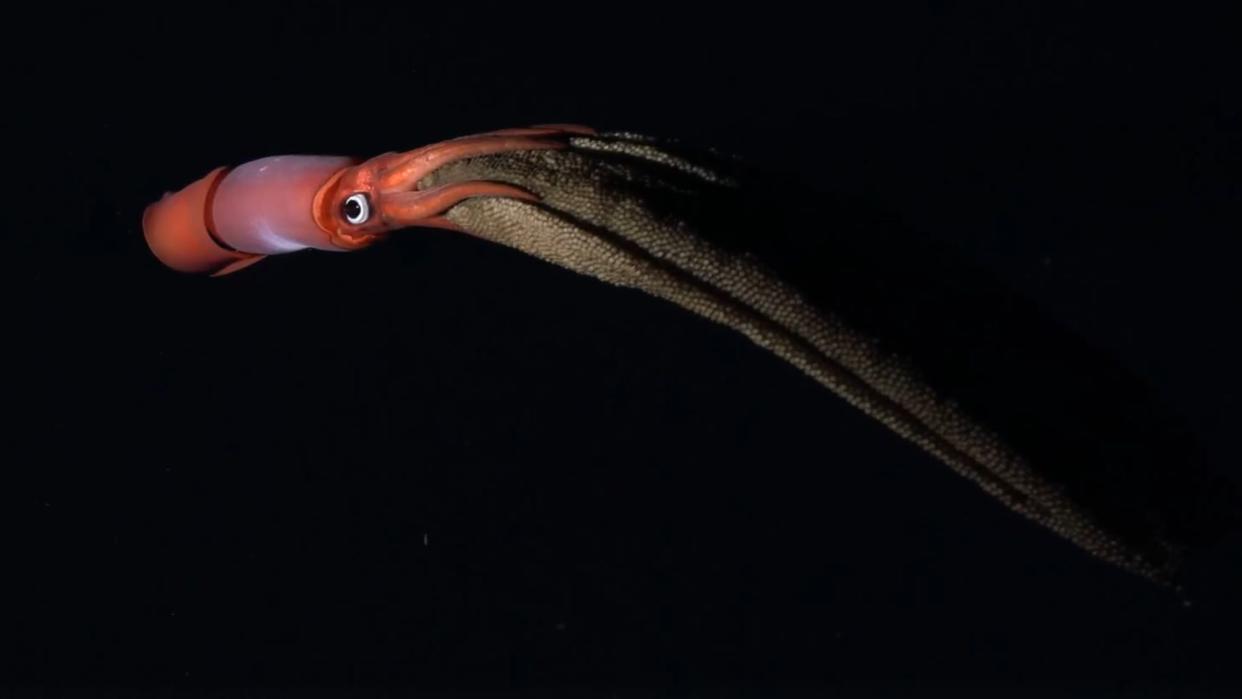Black-eyed squid dragging thousands of eggs like a cape captured in video off Costa Rica

A deep-sea squid has been filmed gliding through inky waters with thousands of eggs suspended from its arms.
Researchers spotted the black-eyed squid (Gonatus onyx) — one of the few squids known to brood their eggs — off the coast of Costa Rica in December. Mesmerizing footage shows the squid trailing its cargo of eggs like a long gown and flapping the fins protruding from its head to move through the water.
"The large egg mass is suspended from hooks on the squid's arms, and while carrying it for several months, the cephalopod will go without feeding," representatives of the Schmidt Ocean Institute, which organized the expedition, wrote in a post on Instagram.

Marine biologists had long assumed that black-eyed squid and other squids lay their eggs in clusters on the seafloor, leaving them to develop and hatch independently. However, in 2001, Brad Seibel, a postdoctoral fellow at the Monterey Bay Aquarium Research Institute (MBARI), turned this assumption on its head. Seibal observed a black-eyed squid brooding an egg sack in Monterey Canyon, off the coast of California, through the lens of a remotely operated submersible.
Related: Watch elusive, sucker-less squid in rare footage captured off the Galapagos
"I just remember jumping out of my seat," Seibel, now a professor of biological oceanography at the University of South Florida, told Science Friday in 2016.
In a 2005 study, Seibel and colleagues described the brooding behavior of G. onyx females, which carry up to 3,000 eggs through open water until the young hatch and swim away. The squid use their arms to pump fresh water through the egg mass, which may help keep them supplied with oxygen.
RELATED STORIES
—Diver captures stunning photos of rare 8-foot giant squid
—Watch a see-through squid with demon-like eyes swim in Alaska's deep waters
—Squid and human brains develop the same way despite diverging 500 million years ago
Black-eyed squid are among the most abundant cephalopods in the Pacific and Atlantic oceans, according to the study. In the North Pacific Ocean, the species is typically found at depths above 6,200 feet (1,900 meters).
These squid are neutrally buoyant, meaning they don't require any effort to float or swim, but "brooding squid cannot swim very quickly, and may be easy prey for deep-diving marine mammals," according to the Instagram post.

